Are you looking for a small and adorable pet turtle that won’t grow too big? If so, you’re in luck! Many species of turtles stay relatively small even when fully grown.
From the tiny musk turtles to the box turtles, there’s sure to be a small turtle out there for everyone.
| Serial No. | Species | Maximum Size (inches/cm) | Native Region | Habitat | Living Temperature Range (°F) | Living Humidity (%) | Diet |
|---|---|---|---|---|---|---|---|
| 1 | Russian tortoise | 4-6 in / 10-15 cm | Kazakhstan, Uzbekistan, and others | Semi-arid | 75-85°F | 40-60% | Leafy greens, vegetables, occasional fruits |
| 2 | Hermann’s tortoise | 6-8 in / 15-20 cm | Europe | Semi-arid | 75-85°F | 40-60% | Leafy greens, vegetables, occasional fruits |
| 3 | Indian star tortoise | 8-10 in / 20-25 cm | India, Sri Lanka | Semi-arid | 75-85°F | 40-60% | Leafy greens, vegetables, occasional fruits |
| 4 | Greek tortoise | 6-8 in / 15-20 cm | Mediterranean region | Semi-arid | 75-85°F | 40-60% | Leafy greens, vegetables, occasional fruits |
| 5 | Red-footed tortoise | 8-10 in / 20-25 cm | South America | Humid | 75-85°F | 60-80% | Leafy greens, vegetables, occasional fruits |
| 6 | Pancake tortoise | 4-6 in / 10-15 cm | East Africa | Semi-arid | 75-85°F | 40-60% | Leafy greens, vegetables, occasional fruits |
| 7 | Hingeback tortoise | 4-6 in / 10-15 cm | Africa, Asia | Semi-arid | 75-85°F | 40-60% | Leafy greens, vegetables, occasional fruits |
| 8 | Leopard tortoise | 8-14 in / 20-35 cm | Africa | Semi-arid | 75-85°F | 40-60% | Leafy greens, vegetables, occasional fruits |
| 9 | Box turtle | 4-6 in / 10-15 cm | North America | Semi-arid | 75-85°F | 40-60% | Leafy greens, vegetables, occasional fruits |
| 10 | Spotted turtle | 4-6 in / 10-15 cm | North America | Semi-arid | 75-85°F | 40-60% | Leafy greens, vegetables, occasional fruits |
| 11 | Wood turtle | 4-6 in / 10-15 cm | North America | Semi-arid | 75-85°F | 40-60% | Leafy greens, vegetables, occasional fruits |
| 12 | African spurred tortoise | 20-36 in / 50-90 cm | Africa | Dry to semi-arid | 75-85°F | 40-60% | Leafy greens, vegetables, occasional fruits |
| 13 | Yellow-footed tortoise | 8-14 in / 20-35 cm | South America | Semi-arid | 75-85°F | 40-60% | Leafy greens, vegetables, occasional fruits |
| 14 | Diamondback terrapin | 5-7 in / 12-18 cm | North America | Semi-arid | 75-85°F | 40-60% | Leafy greens, vegetables, occasional fruits |
| 15 | Musk turtle | 4-5 in / 10-13 cm | North America | Aquatic | 75-85°F | 40-60% | Leafy greens, vegetables, fruits, fish, shrimp |
| 16 | Painted turtle | 4-6 in / 10-15 cm | North America | Aquatic | 75-85°F | 40-60% | Leafy greens, vegetables, fruits, worms, insects |
| 17 | Slider turtle | 6-8 in / 15-20 cm | North America | Aquatic | 75-85°F | 40-60% | Leafy greens, vegetables, fruits, worms, insects |
Russian tortoise (Agrionemys horsfieldii)
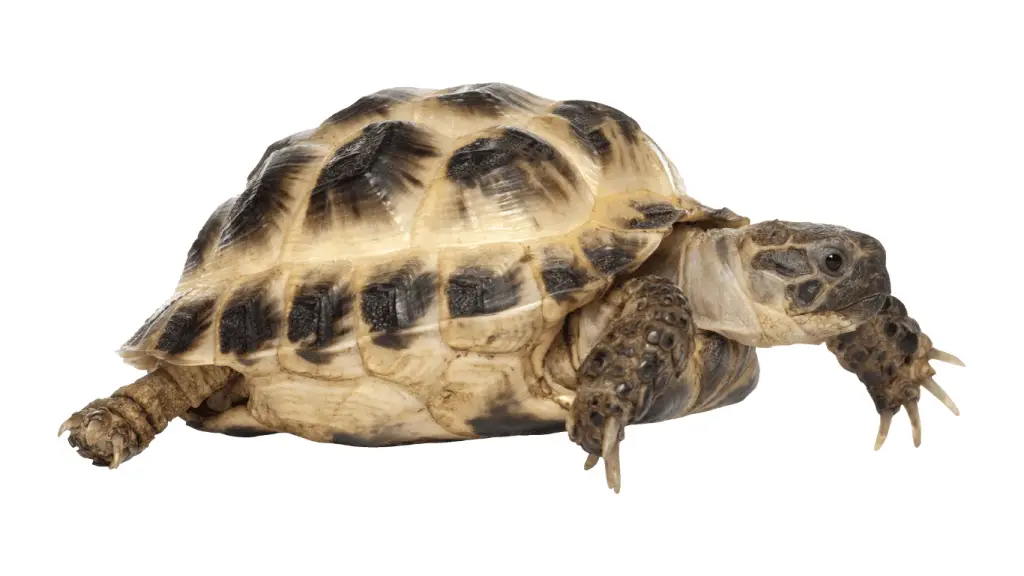
The Russian tortoise, also known as the Horsfield’s tortoise (Agrionemys horsfieldii), is one of the smallest species of turtle and is an ideal choice for those looking for a pet that won’t grow too large. Fully grown, they typically reach a maximum size of around 4-6 inches long (10-15 cm). They are native to Asian countries, including Kazakhstan, Uzbekistan, and surrounding areas.
Care needs: Russian tortoises require a semi-arid habitat with plenty of hiding spots, an appropriate temperature range (75-85°F), and humidity of 40-60%. They need a diet that consists of leafy greens, vegetables, and occasional fruits.
Hermann’s tortoise (Testudo hermanni)
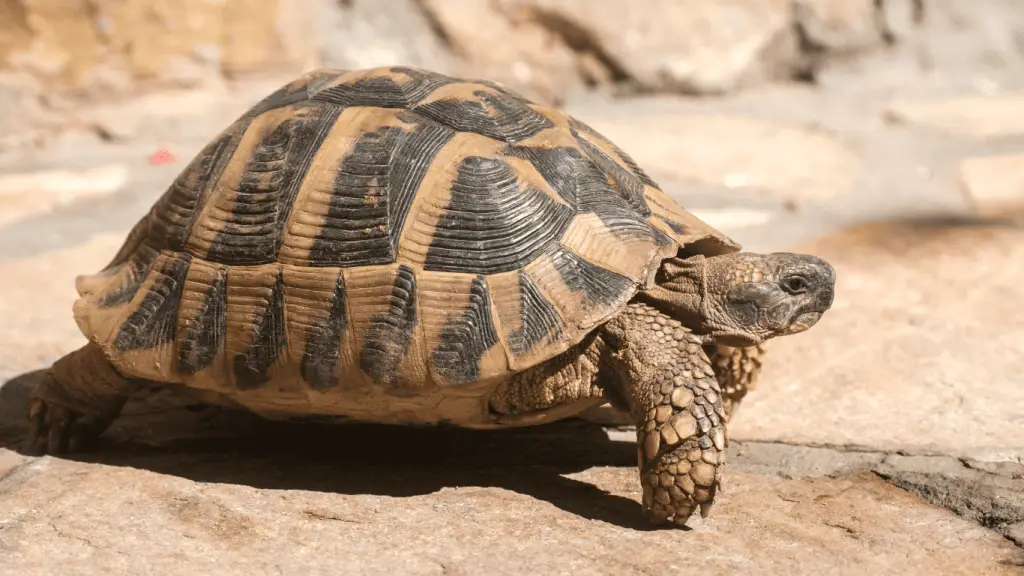
The Hermann’s tortoise (Testudo hermanni) is a small species of turtle native to Europe. Fully grown, they reach a maximum size of 6-8 inches long (15-20 cm). While they are typically kept as outdoor pets in suitable climates, they can also be kept indoors with some additional care and effort.
Care needs: Hermann’s tortoises require a semi-arid habitat with plenty of hiding spots, an appropriate temperature range (75-85°F), and humidity of 40-60%. They need a diet that consists of leafy greens, vegetables, and occasional fruits.
Indian star tortoise (Geochelone elegans)
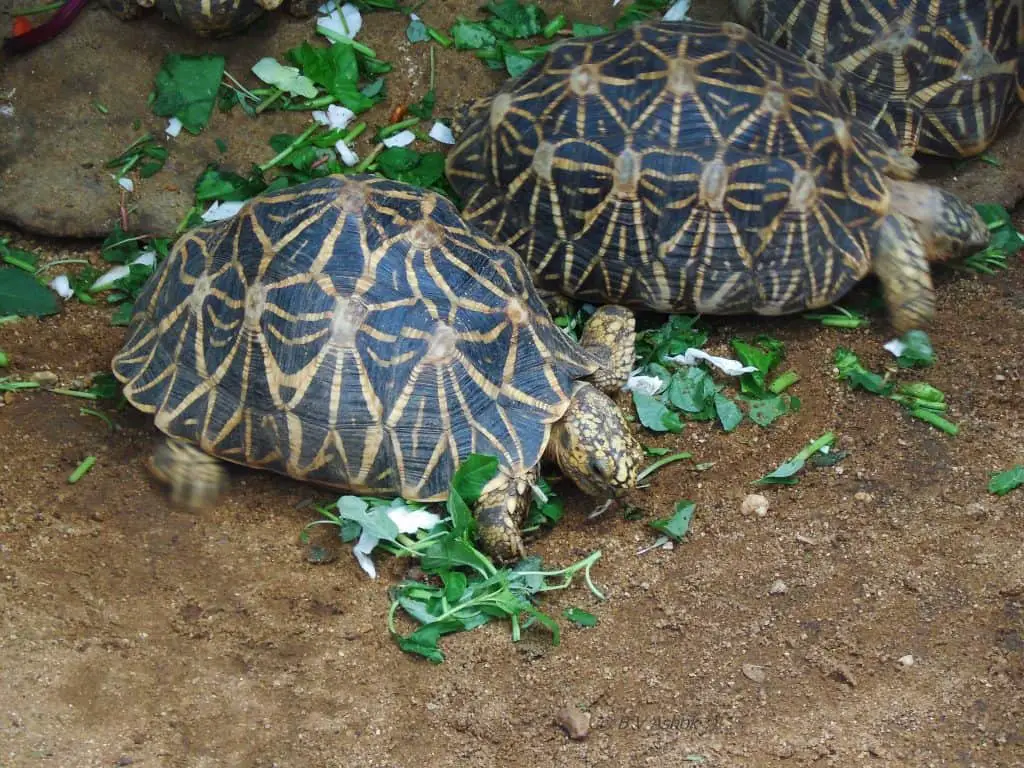
The Indian star tortoise (Geochelone elegans) is a medium-sized species of turtle native to India and Sri Lanka. Fully grown, they reach a maximum size of around 8-10 inches long (20-25 cm). They are popular pet turtles due to their striking appearance and the fact that they stay relatively small even when fully grown.
Care needs: Indian star tortoises require a semi-arid habitat with plenty of hiding spots, an appropriate temperature range (75-85°F), and humidity of 40-60%. They need a diet that consists of leafy greens, vegetables, and occasional fruits.
Greek tortoise (Testudo graeca)
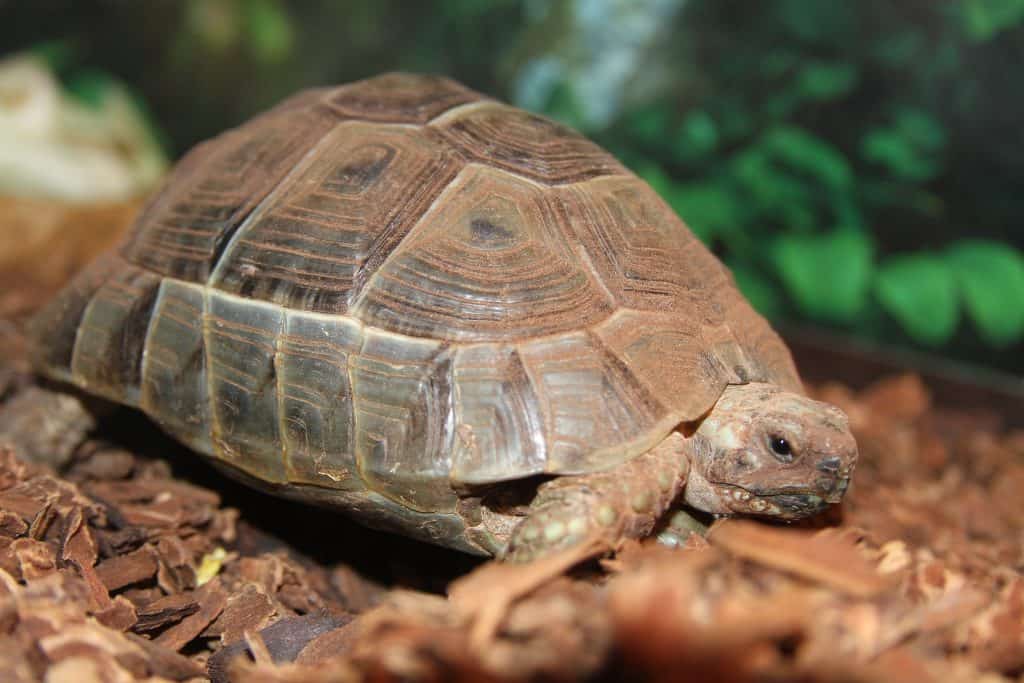
The Greek tortoise (Testudo graeca) is a medium-sized species of turtle native to the Mediterranean region. Fully grown, they reach a maximum size of around 6-8 inches long (15-20 cm). They are active, curious creatures that make for great pet turtles for those who want something smaller and more manageable.
Care needs: Greek tortoises require a semi-arid habitat with plenty of hiding spots, an appropriate temperature range (75-85°F), and humidity of 40-60%. They need a diet that consists of leafy greens, vegetables, and occasional fruits.
Red-footed tortoise (Chelonoidis carbonarius)
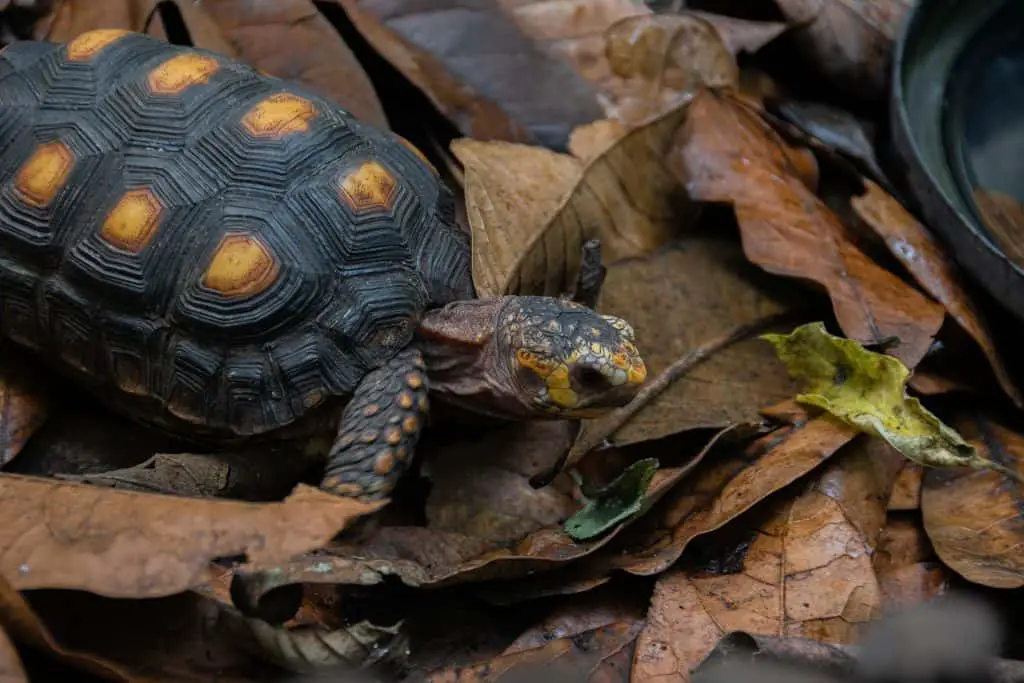
The red-footed tortoise (Chelonoidis carbonarius) is a medium-sized species of turtle native to South America. Fully grown, they reach a maximum size of around 8-10 inches long (20-25 cm). They are colorful and active creatures that make for great pet turtles but don’t get too large.
Care needs: Red-footed tortoises require a humid habitat with plenty of hiding spots, an appropriate temperature range (75-85°F), and humidity of 60-80%. They need a diet that consists of leafy greens, vegetables, and occasional fruits.
Pancake tortoise (Malacochersus tornieri)
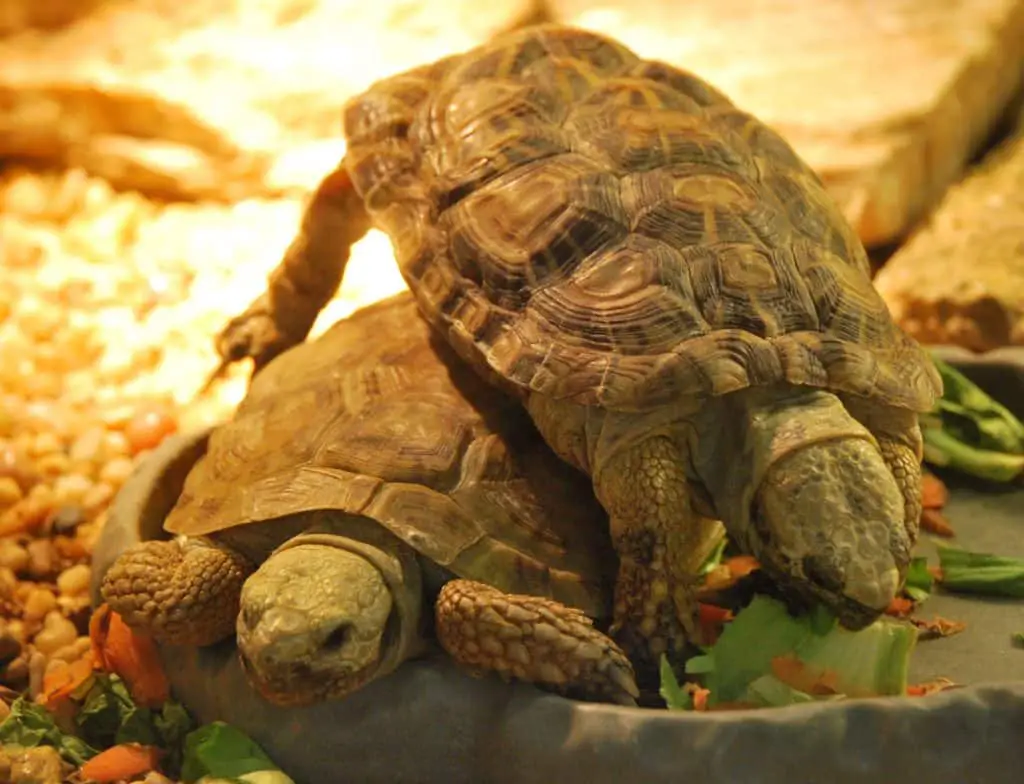
The pancake tortoise (Malacochersus tornieri) is a small species of turtle native to East Africa. Fully grown, they reach a maximum size of around 4-6 inches long (10-15 cm). They are one of the smallest species of turtles and their shell shape allows them to hide easily in tight spaces.
Care needs: Pancake tortoises require a semi-arid habitat with plenty of hiding spots, an appropriate temperature range (75-85°F), and humidity of 40-60%. They need a diet that consists of leafy greens, vegetables, and occasional fruits.
Hingeback tortoise (Kinixys spp.)
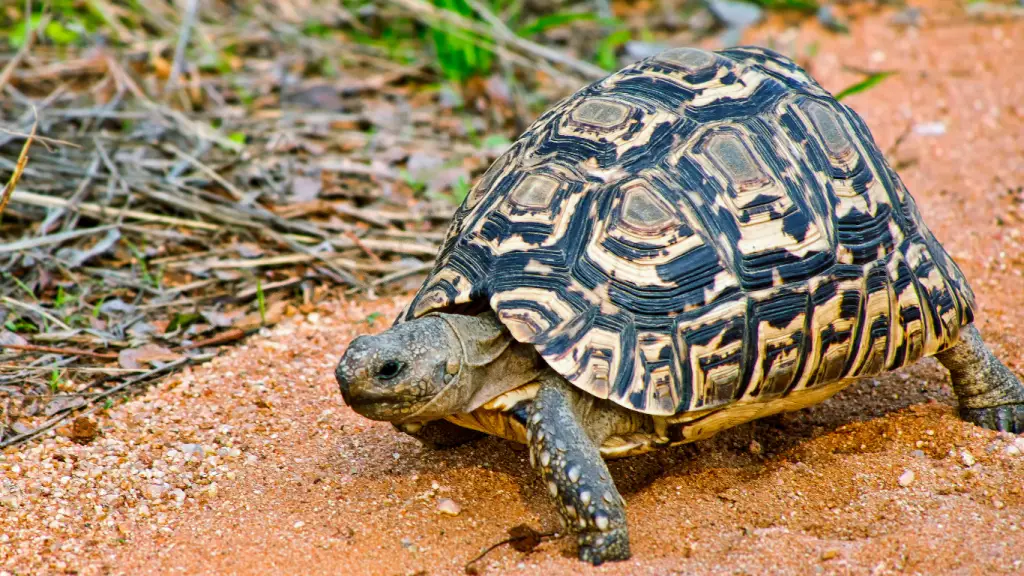
The hingeback tortoise (Kinixys spp.) is a small species of turtle native to Africa and Asia. Fully grown, they reach a maximum size of around 4-6 inches long (10-15 cm). They are one of the smallest species of turtles and their unique shell shape allows them to hide easily in tight spaces.
Care needs: Hingeback tortoises require a semi-arid habitat with plenty of hiding spots, an appropriate temperature range (75-85°F), and humidity of 40-60%. They need a diet that consists of leafy greens, vegetables, and occasional fruits.
Leopard tortoise (Stigmochelys pardalis)
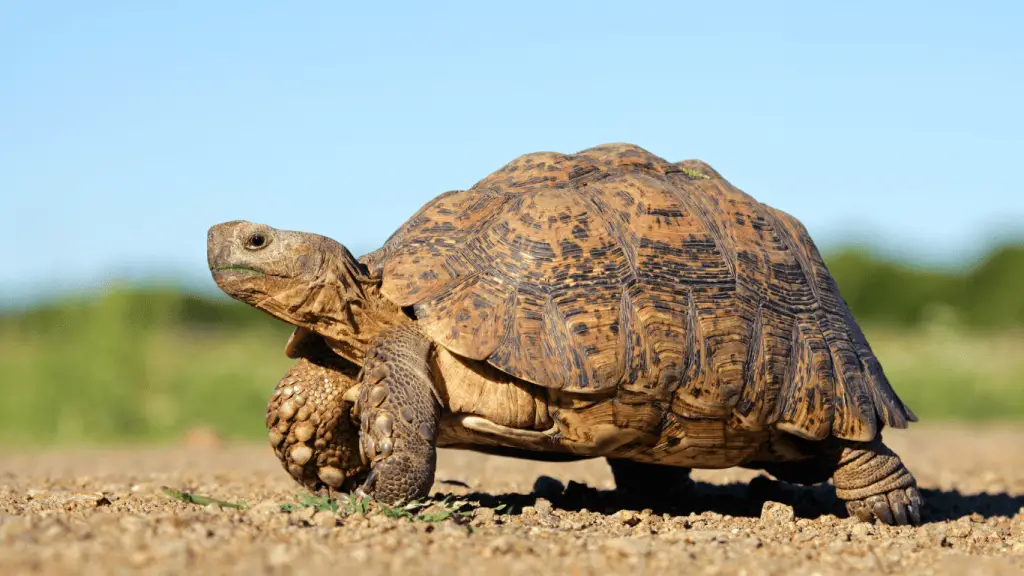
The leopard tortoise (Stigmochelys pardalis) is a medium-sized species of turtle native to Africa. Fully grown, they reach a maximum size of around 8-14 inches long (20-35 cm). They are colorful, active creatures that make for great pet turtles but don’t get too large.
Care needs: Leopard tortoises require a semi-arid habitat with plenty of hiding spots, an appropriate temperature range (75-85°F), and humidity of 40-60%. They need a diet that consists of leafy greens, vegetables, and occasional fruits.
Box turtle (Terrapene spp.)
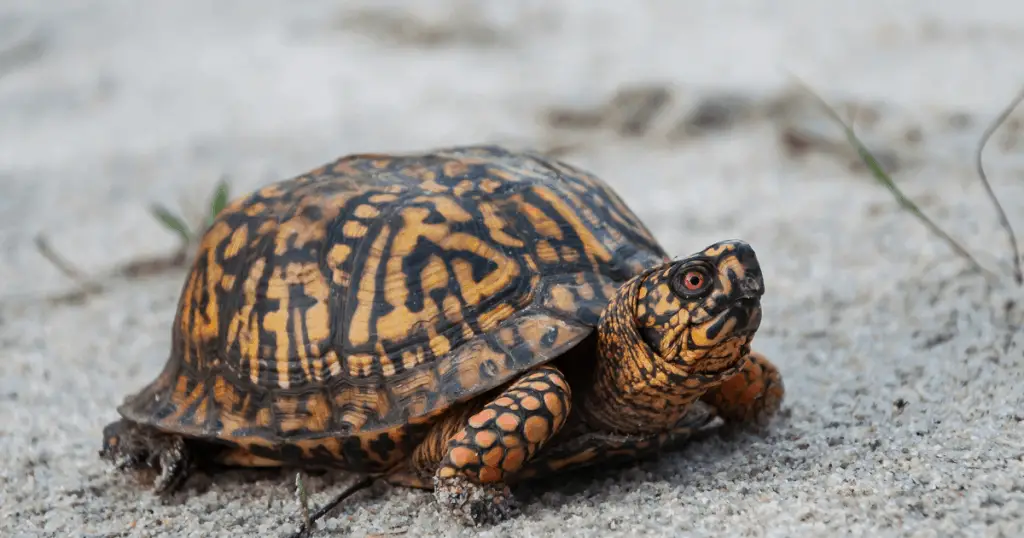
The box turtle (Terrapene spp.) is a small species of turtle native to North America. Fully grown, they reach a maximum size of around 4-6 inches long (10-15 cm). They are one of the smallest species of turtles and are known for their unique shell shape that allows them to hide easily in tight spaces.
Care needs: Box turtles require a semi-arid habitat with plenty of hiding spots, an appropriate temperature range (75-85°F), and humidity of 40-60%. They need a diet that consists of leafy greens, vegetables, and occasional fruits.
Spotted turtle (Clemmys guttata)

The spotted turtle (Clemmys guttata) is a small species of turtle native to North America. Fully grown, they reach a maximum size of around 4-6 inches long (10-15 cm). They are one of the smallest species of turtles and are known for their unique shell pattern that allows them to hide easily in tight spaces.
Care needs: Spotted turtles require a semi-arid habitat with plenty of hiding spots, an appropriate temperature range (75-85°F), and humidity of 40-60%. They need a diet that consists of leafy greens, vegetables, and occasional fruits.
Wood turtle (Glyptemys insculpta)

The wood turtle (Glyptemys insculpta) is a small species of turtle native to North America. Fully grown, they reach a maximum size of around 4-6 inches long (10-15 cm). They are one of the smallest species of turtles and their shell shape allows them to hide easily in tight spaces.
Care needs: Wood turtles require a semi-arid habitat with plenty of hiding spots, an appropriate temperature range (75-85°F), and humidity of 40-60%. They need a diet that consists of leafy greens, vegetables, and occasional fruits.
African spurred tortoise (Geochelone sulcata)
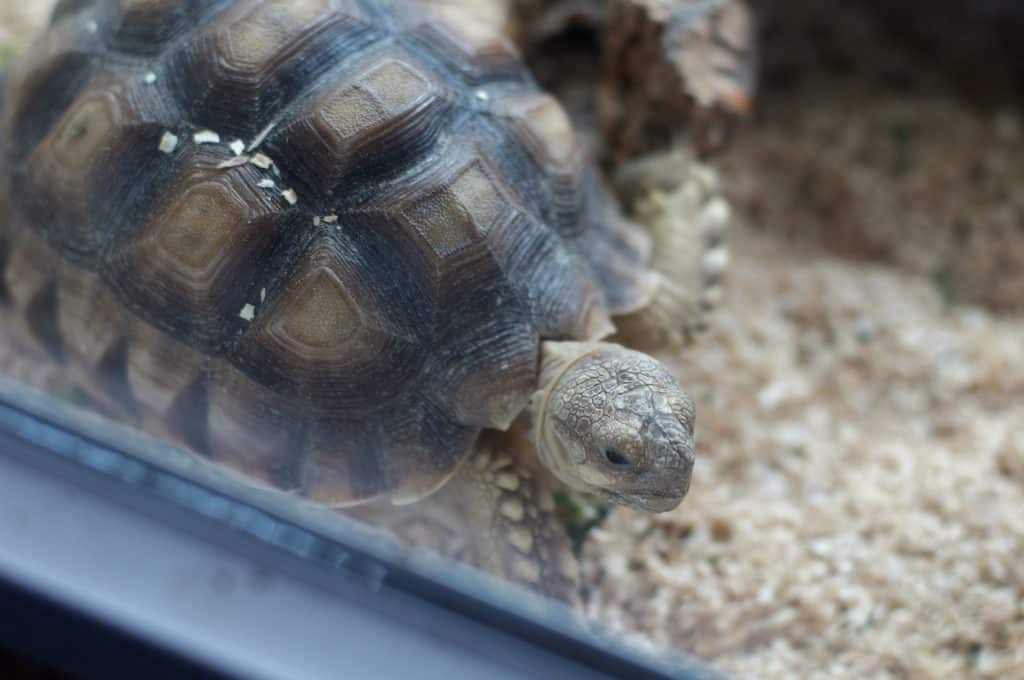
The African spurred tortoise (Geochelone sulcata) is a large species of turtle native to Africa. Fully grown, they reach a maximum size of around 20-36 inches long (50-90 cm). While they can get quite large, they are still considered a small species compared to other turtles.
Care needs: African spurred tortoises require a dry to semi-arid habitat with plenty of hiding spots, an appropriate temperature range (75-85°F), and humidity of 40-60%. They need a diet that consists of leafy greens, vegetables, and occasional fruits.
Yellow-footed tortoise (Geochelone denticulata)
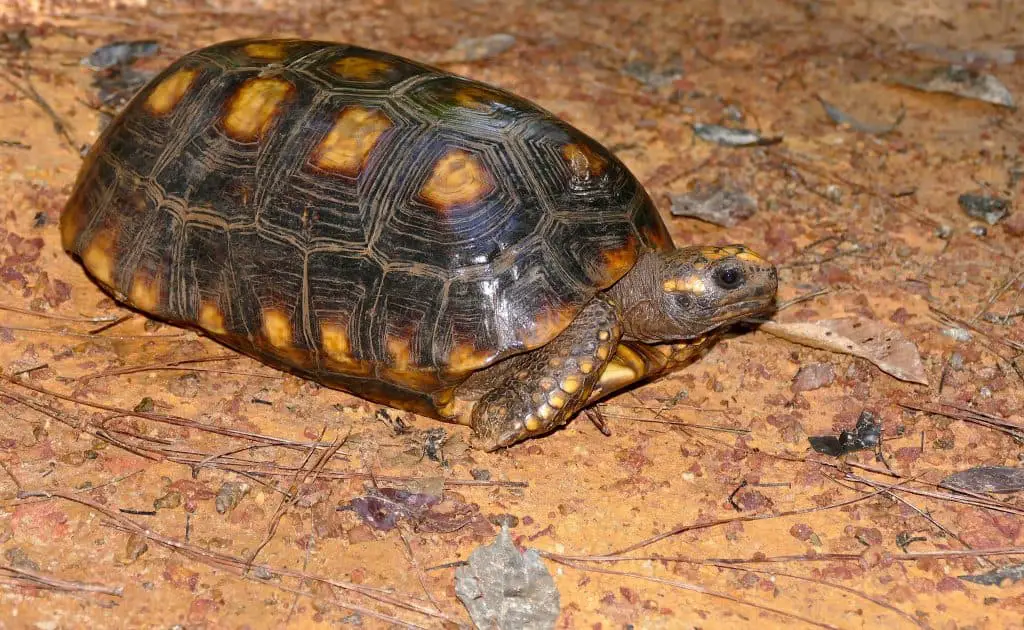
The yellow-footed tortoise (Geochelone denticulata) is a medium-sized species of turtle native to South America. Fully grown, they reach a maximum size of around 8-14 inches long (20-35 cm). They are one of the smallest species of turtles and their shell shape allows them to hide easily in tight spaces.
Care needs: Yellow-footed tortoises require a semi-arid habitat with plenty of hiding spots, an appropriate temperature range (75-85°F), and humidity of 40-60%. They need a diet that consists of leafy greens, vegetables, and occasional fruits.
Diamondback terrapin (Malaclemys terrapin)
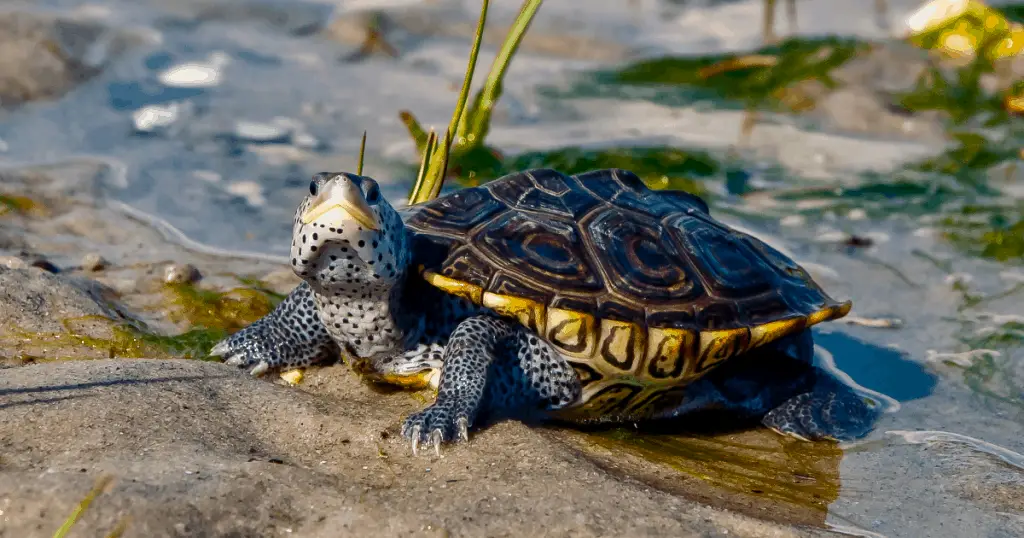
The diamondback terrapin (Malaclemys terrapin) is a small species of turtle native to North America. Fully grown, they reach a maximum size of around 5-7 inches long (12-18 cm). They are one of the smallest species of turtles and their shell shape allows them to hide easily in tight spaces.
Care needs: Diamondback terrapins require a semi-arid habitat with plenty of hiding spots, an appropriate temperature range (75-85°F), and humidity of 40-60%. They need a diet that consists of leafy greens, vegetables, and occasional fruits.
Musk turtle (Sternotherus spp.)
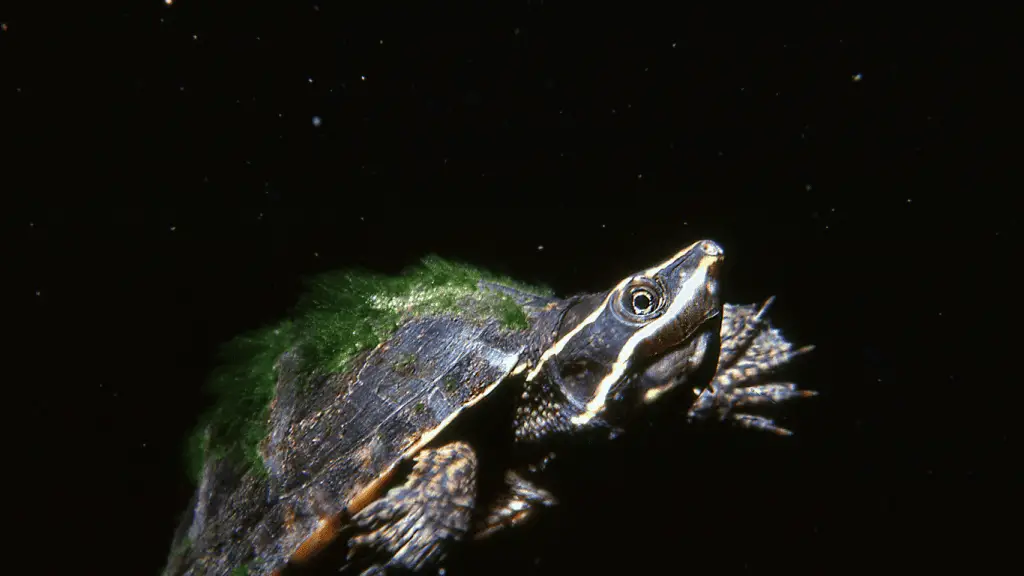
The musk turtle (Sternotherus spp.) is a small species of turtle native to North America. Fully grown, they reach a maximum size of around 4-5 inches long (10-13 cm). They are one of the smallest species of turtles and their shell shape allows them to hide easily in tight spaces.
Care needs: Musk turtles require an aquatic habitat with plenty of hiding spots, an appropriate temperature range (75-85°F), and humidity of 40-60%. They need a diet that consists of leafy greens, vegetables, and occasional fruits. They will also occasionally eat fish or shrimp.
Painted turtle (Chrysemys spp.)
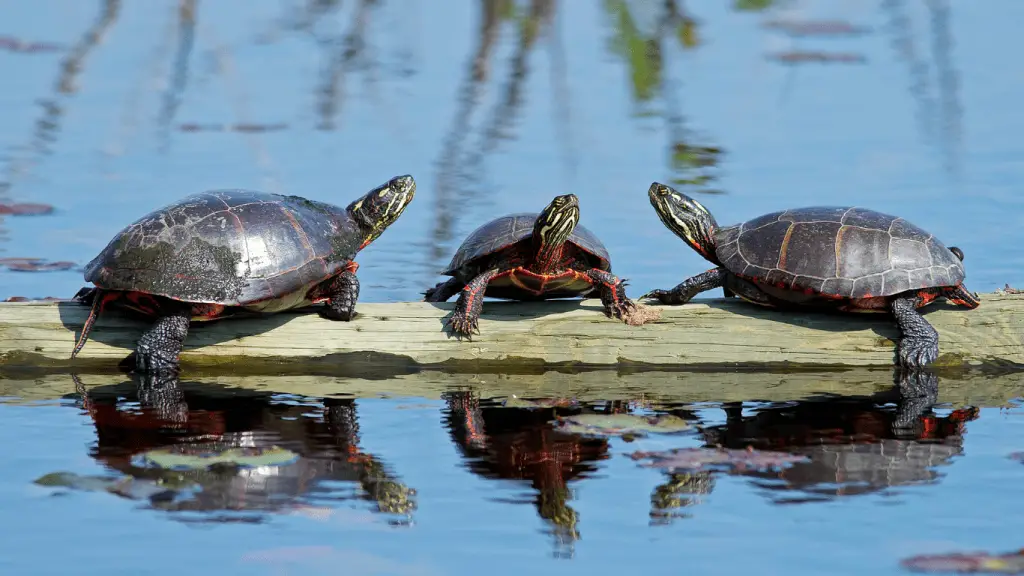
The painted turtle (Chrysemys spp.) is a small species of turtle native to North America. Fully grown, they reach a maximum size of around 4-6 inches long (10-15 cm). They are one of the smallest species of turtles and their shell shape allows them to hide easily in tight spaces.
Care needs: Painted turtles require an aquatic habitat with plenty of hiding spots, an appropriate temperature range (75-85°F), and humidity of 40-60%. They need a diet that consists of leafy greens, vegetables, and occasional fruits. They will also occasionally eat worms or insects.
Slider turtle (Trachemys spp)
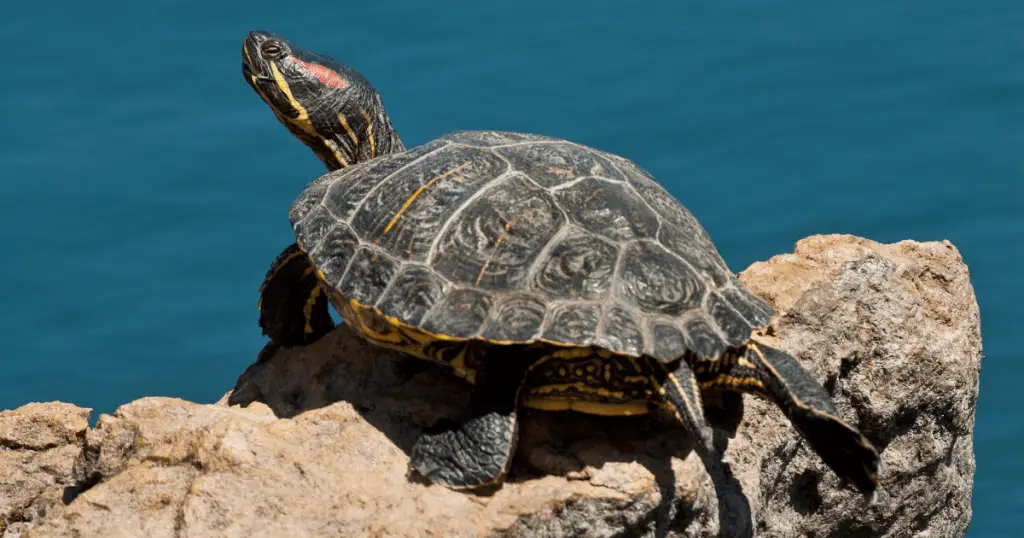
The slider turtle (Trachemys spp.) is a small species of turtle native to North America. Fully grown, they reach a maximum size of around 6-8 inches long (15-20 cm). They are one of the smallest species of turtles, and their shell shape allows them to hide easily in tight spaces.
Care needs: Slider turtles require an aquatic habitat with plenty of hiding spots, an appropriate temperature range (75-85°F), and humidity of 40-60%. They need a diet that consists of leafy greens, vegetables, and occasional fruits. They will also occasionally eat worms or insects.
Conclusion
These small species of turtles make great pets for those looking for a low-maintenance companion. With the proper environment and diet, they can live long, healthy lives. It is important to research each species before deciding which one is right for you. Knowing the specific needs of your turtle will help ensure it stays happy and healthy in its new home.

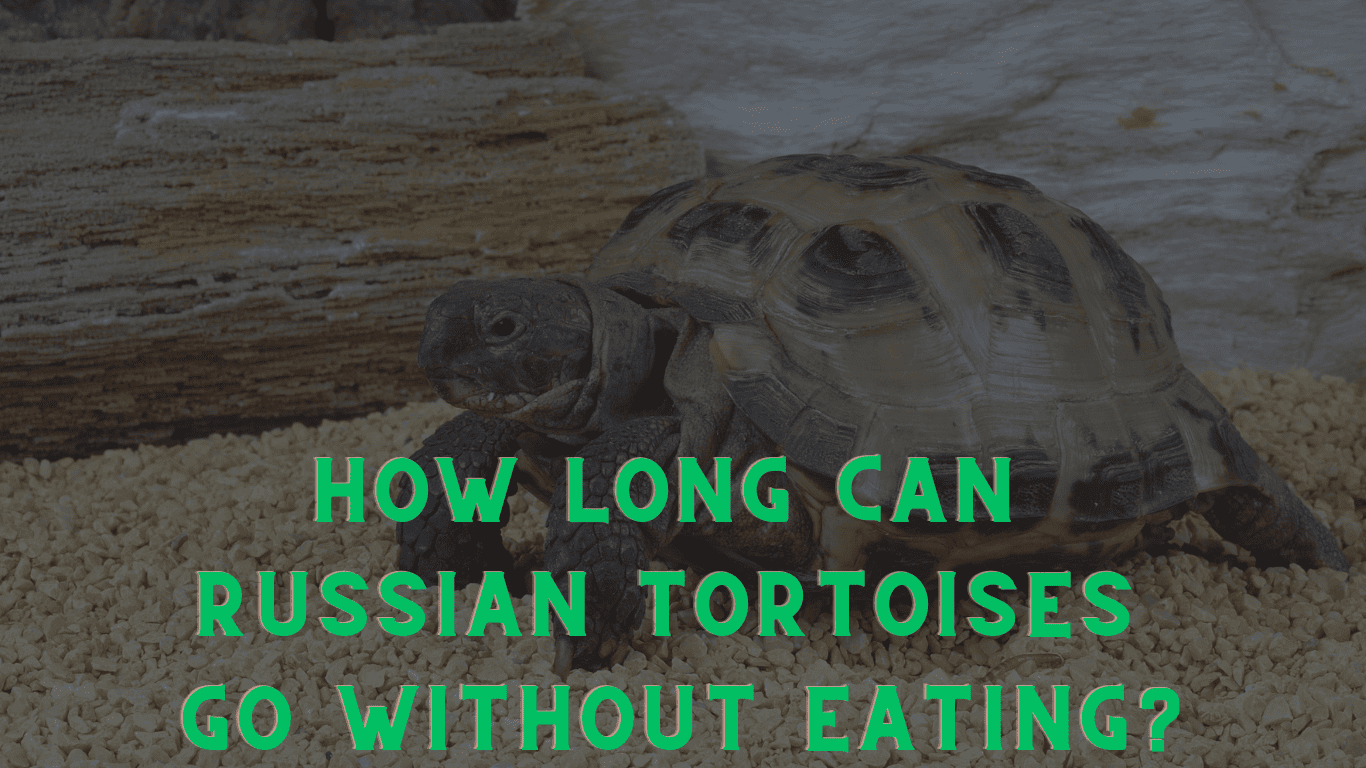
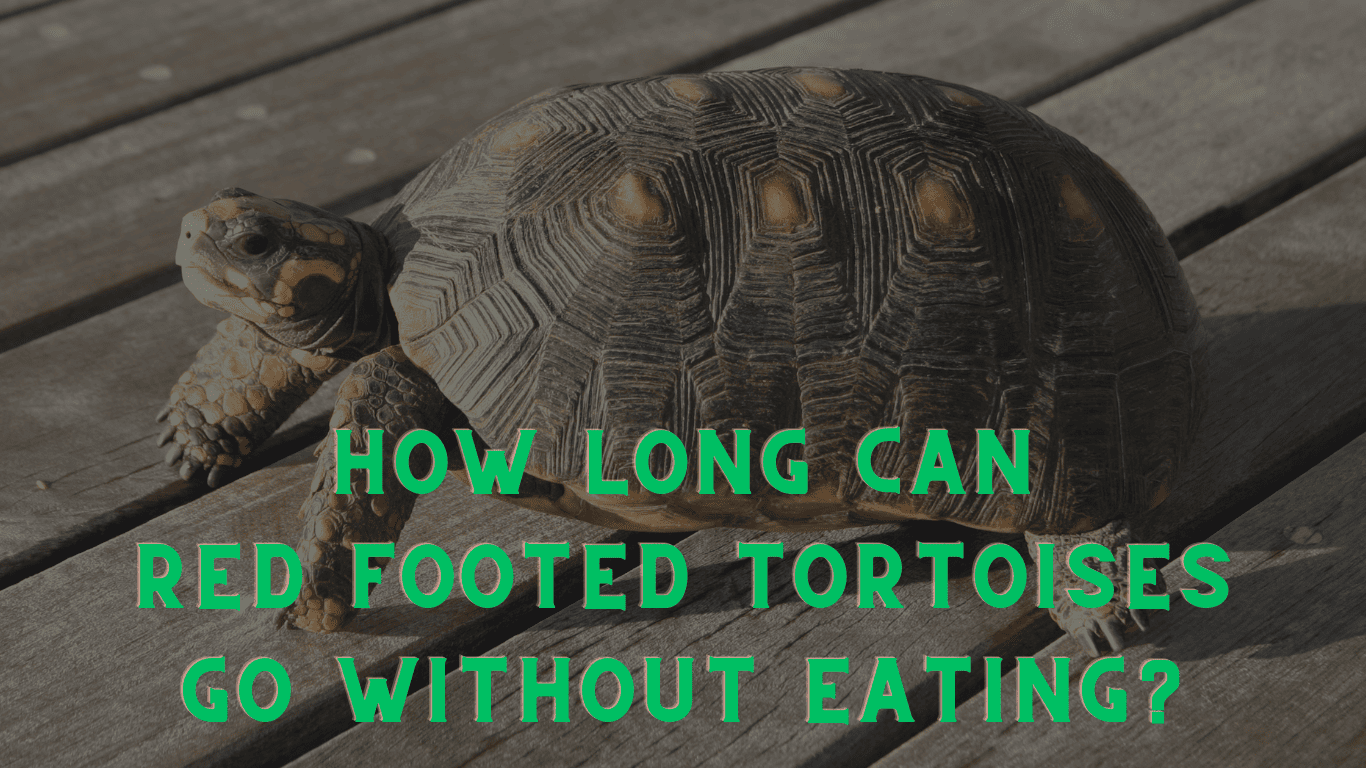

Leave a Reply